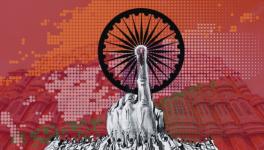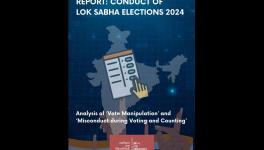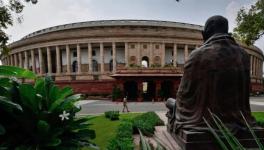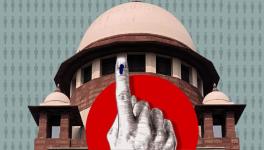An Obituary of Lutyen’s Delhi

Lutyen’s Delhi, a part of the city, is by all means the capital of 125 billion people, legitimised by a Constitution that aimed to create a developmental state, a vibrant democracy, independent constitutional and statutory public institutions, and a political system to work for economic development and social justice.
I am writing the obituary of Lutyen’s Delhi.
Lutyen’s Delhi takes its name after Edwin Lutyen, a British architect, who designed some of the prominent colonial buildings in India. The world I refer to as Lutyen’s Delhi includes the political class, formal state institutions, South and North block, wheeler-dealers, invisible corporates, and the like. You may also call it as ‘Delhi of the powerful.’
How do we describe the ‘Delhi of the powerful?’ How does it look like? In short, I call it a gated community. With security cordoned bungalows, office buildings almost impenetrable by common persons, white coloured moving cars with tainted glasses and security laden convoys, Lutyen’s Delhi remains mostly out of the public gaze. Most of these people work under the oath of secrecy (not oath of transparency!). Much of what they really do, is orally done, but the files they handle are bulky. It is difficult to hold them accountable as they take refuge in statutes, case laws, rule books and government procedures that a commoner would never understand.
The inhabitants of Lutyen’s Delhi claim to govern the country through rule of law, propriety, ethical conduct, and personal integrity. They skilfully create a façade of their deep commitment to rule of law and constitutional governance by telling masses that the institutions are meant for their welfare, safety, security and justice.
Death of the Facade
We are mourning the death of the façade of democratic governance, the moral authority to govern, the claim to represent people, and this community’s ability to do checks and balances to keep the system functioning credibly.
The rot in the gated community is not new. Way back in 1972, Indira Gandhi elevated a relatively junior judge A. N. Roy to the position of the Chief Justice of the Supreme Court, superseding some nine senior judges, and in contraventions of all existing conventions. In 1975, in response to the Allahabad High Court’s judgement against her candidature, she passed an ordinance invoking the Emergency. She went on to do the most controversial amendment to the Constitution, known as the 42nd amendment, reducing the power of the judiciary and enhancing the power of the parliament. Until T. N. Seshan took over, the Central government used to tell the Election Commission of India, a constitutional body, when to declare national elections. The Central Bureau of Investigation, Enforcement Directorate and the Income Tax authorities were used on innumerable occasions in the past to hound people and organisations not favourable to the ruling dispensation.
When the rot is not checked it can completely corrode the system. Corrosion is a slow process, unfelt by most, but when it enters its final phase, it can be swift, and take everyone by surprise. This is what has happened in last four years.
First, it was the Reserve Bank of India (RBI). Despite being a constitutional authority to govern the world of money in the country, RBI was made to sit mum and watch, while the government demonetised 86% of the currency in the country, mounting hardships to the ordinary citizen no less than of a famine. The mockery continued thereafter with modern mythological stories galore, coupled with brute false campaign, until everyone felt tired of it, and resigned to fate or mythologies.
Then it was the Election Commission of India. It did something unique; announced the date of declaration of results without declaring the date of election in Gujarat in 2017. Thereafter, in almost every election, the IT cell of the ruling party (Bharatiya Janata Party) were in the know of the election dates, before those were announced to the public.
A couple of months later, four senior-most judges of the Supreme Court came out in the open, held a press conference, with alarming revelations. It shook the very edifice of the judicial independence and integrity in the country.
And now the CBI. In contrast to the popular trust on CBI, the rot came out in the open. Charges of corruption against CBI officials, including their directors, are not new. The rot reached a stage, where it made the entire Lutyen’s Delhi vulnerable. If analogy helps, it looked like a situation of the self- destruction of Lord Krishna’s Jadava clan in Mahabharata by infighting. Therefore, the highest level of the political class had to act after midnight, to protect all the gates, and install new gate-keepers, so that the gated community is saved from being exposed.
The Rot and Corrosion
The rot and corrosion have another important dimension to it. For years now, the stories told by our politicians became highly predictable, and fictional components in their stories have reached the skies. This is not so much new; what is new are the various tools and techniques by which such fictions are being constantly made credible by print, electronic and social media. No longer. The politicians, the defence forces, police, bureaucracy, think-tanks, and even the senior-most ministers, including the most celebrated one, have joined the story-telling spree in an unprecedented scale. These stories have an average life of a week, so new stories are needed every week. Amidst the joy of hearing such fascinating fiction, the rot is visible. When leaders do it, the rank and file do it too. If the defence chief tells fictional stories, his subordinates would love to do it too. It can eventually reach a level when the website of the Union Home Ministry posts a photograph showing well-constructed border infrastructure with excellent roads and lights. It soon turned out that the photograph was of US-Mexico border. On the day, the CBI feud broke out, a video clip went viral describing Rakesh Asthana (CBI Special Director) in the league with Subhas Chandra Bose and Swami Vivekananda in courage and personal integrity!
When the Prime Minister tells stories, other ministers feel encouraged to do the same. Many such stories are so ridiculous that one has to shout to make it feel credible, so shouting has become the new normal. And the only way to make those remain in the public mind, is not to allow a counter story to be told. So disrupting others, not providing space, and removing the counter story-tellers from the pubic space by silent coups have become the new normal.
The rot is palpable. When fictions become the new normal, what dies is the moral fabric of the polity. The institutions get corroded from within, lose their credibility, their collective moral strength to serve the people of this land.
Let’s not deplore that the façade of rule of law, due political and administrative process, transparency, propriety and facts are all gone, and the naked dance of brute and corrupt power is telling the real story of Lutyen’s Delhi. It's not a tragedy, what we are witnessing is farce. As I write, the farce continues with the rift between RBI and government becoming wide open. Press conferences, counter-press conferences, tweets, petitions to the court in the morning, day, and even in the night, hourly press statements, selected leaks to the press-- the farce is playing out.
(The writer is Professor at School of Development of Azim Premji University, Bengaluru)
Get the latest reports & analysis with people's perspective on Protests, movements & deep analytical videos, discussions of the current affairs in your Telegram app. Subscribe to NewsClick's Telegram channel & get Real-Time updates on stories, as they get published on our website.
























